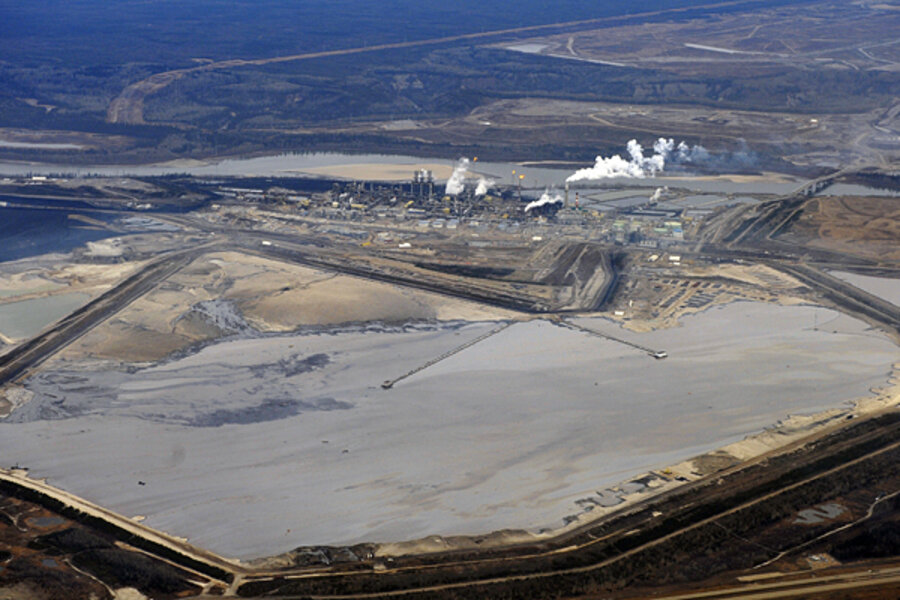Alberta mulls new emissions rules to allay Keystone XL pipeline concerns
Loading...
The provincial government in Alberta is mulling new rules that would require the oil industry to cut greenhouse gas emissions tied to oil sands production by as much as 40 percent per barrel. The measure may be part of the federal government's push to allay Washington's concerns about the Keystone XL pipeline. Some of the concern surrounding the production of oil sands, the type of oil designated for the controversial pipeline, is that it's more carbon intensive to produce than conventional oil. Alberta's government has expressed concern that it won't be able to meet its emission targets without new rules, though some in the oil industry may be already ahead of the game. While emissions may be part of the debate over the controversial cross-border pipeline, a financial analysis suggests the Canadian government is looking in the wrong direction.
Alberta Premier Alison Redford was in the United States last week trying to shore up support for the Keystone XL oil pipeline. The U.S. government hosts a town hall meeting in Nebraska later this month to vet public comments on a draft environmental assessment from the State Department. That report found that, overall, the environmental threat from oil sands production would remain with or without the pipeline. The Canadian government, however, is under pressure to find ways to allay some of those environmental concerns to move the project forward. (Related article: Enbridge Continues Rise as Canada Seeks Own Energy Road)
A law that went into force in 2007 requires companies exploiting the vast oil sand deposits in the country to cut their emissions by 12 percent of their base level and put around $15 into a technology fund for every ton they go over that limit. Calgary officials say it's important not only for the provincial government, but for the federal government as well, to let Washington know it's serious about the environment. Part of the controversy over Keystone XL is tied to emissions, so it's imperative that Canadian Prime Minister Stephen Harper sets the right tone as the pipeline conversation gains momentum.
Norwegian energy company Statoil, however, suggested last week it wasn't waiting around for the legal process to sort itself out on emissions. In 2012, the company said it increased its oil sand production by 60 percent while at the same time cutting its CO2 intensity by more than 20 percent. While part of its stewardship, like tree-planting and land reclamation, may be just good public relations, it said it aims to cut CO2 intensity by 25 percent by 2020 and reach the 40 percent mark five years later. Regional Vice President Stale Tungesvik said Statoil would continue to work to improve not only its oil recovery, but its carbon footprint as well. Statoil plays no direct role in the Keystone XL pipeline. (Related article: Have the Canadian Tar Sands had their Day?)
A report last week from the Canadian Imperial Bank of Commerce finds that while Keystone XL would be a boost for oil sands trade, it's just "one of several important pieces of the puzzle for Canada's energy sector." The CIBC World Market report finds that, with U.S. shale oil production competing for the same transportation networks, the Canadian government needs to capitalize on emerging Asian economies, not U.S. trends, if it's expected to realize the full benefits of its oil riches.
"The world will still need Canada's crude, given still ample demand growth ahead for Asia, and we doubt supply-demand conditions will permanently sustain prices below Canadian project break-evens," said CIBC Chief Economist Avery Shenfeld. "But it's increasingly important that Canada move on one or more of the alternative pipelines to get our product headed Asia's way."
Original source: http://oilprice.com/Energy/Crude-Oil/Are-Canadian-Oil-Policies-Misguided.html







